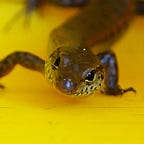What’s in a Name?
The importance of taxonomy
I had this conversation the other day.
Me, pointing at a weedy plant with pale flowers: This is Jessamine.
Other person: Jasmine.
Me: Jessamine.
Other: It’s pronounced Jasmine.
Me: This is Jessamine. It’s a garden plant gone feral.
Other: Jasmine.
Me: It’s a Cestrum. Jasmine is Jasminium.
Other: I can’t be bothered with those Latin names.
And most of the time neither can I. They can be confusing, especially when they change, but they are often much less of a problem than common or vernacular names.
In this botanical version of Monty Python’s argument sketch, we were both right — and we were both wrong. Jessamine (Cestrum, Solanaceae, Americas) is completely unrelated to Jasmine (Jasminium, Oleaceae, Africa to Oceania). But a lot of unrelated species bear the name Jasmine, including the jessamine Cestrum nocturnum a.k.a. Night-flowering Jasmine.
So Latin names are difficult to learn, but so are common names.
In a previous career, I was a taxonomist. Part of that job is to name new taxa — species, genera, even families (although I wasn’t quite that brave) — but most…
